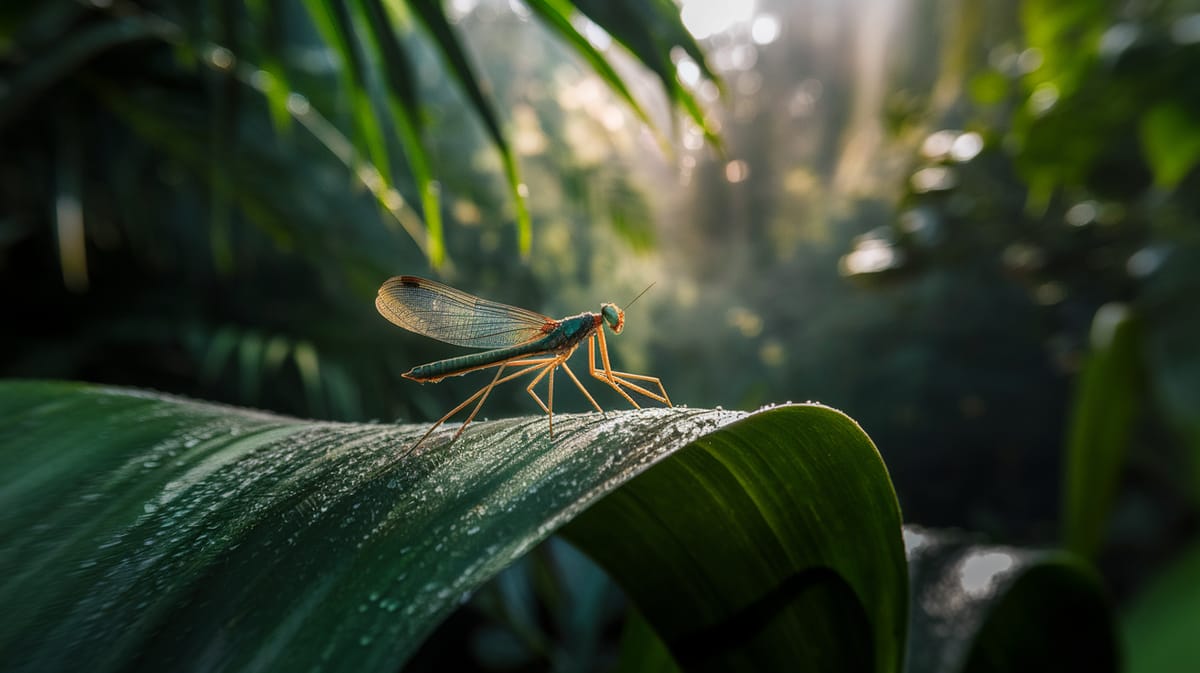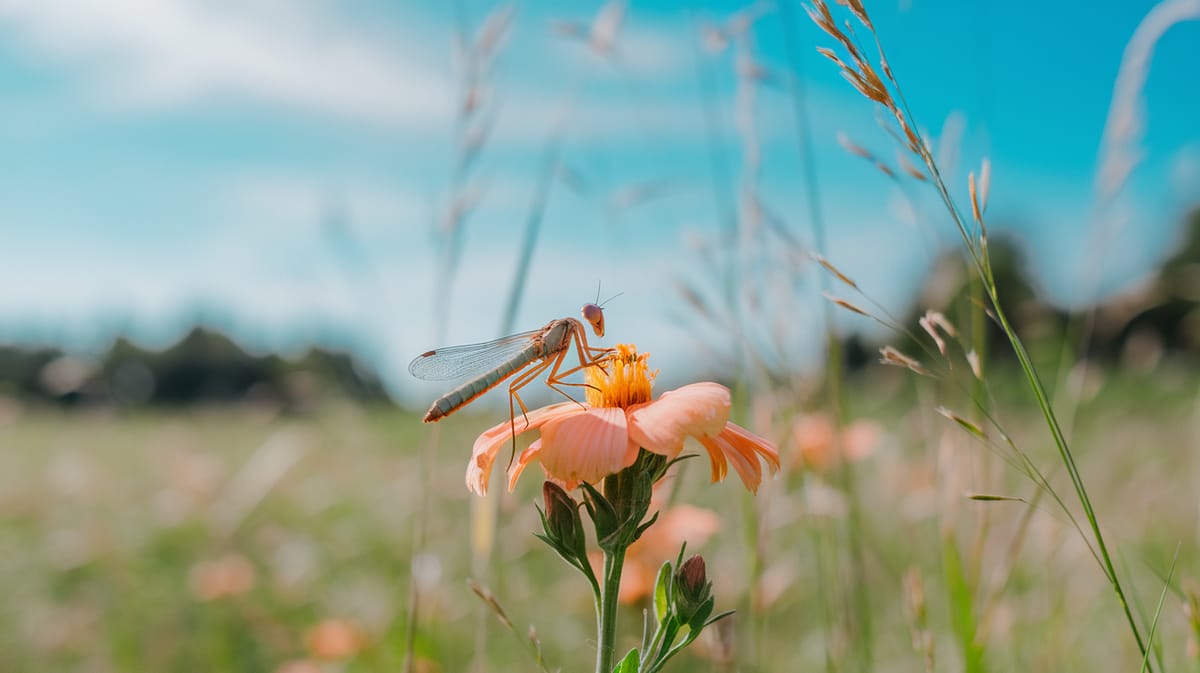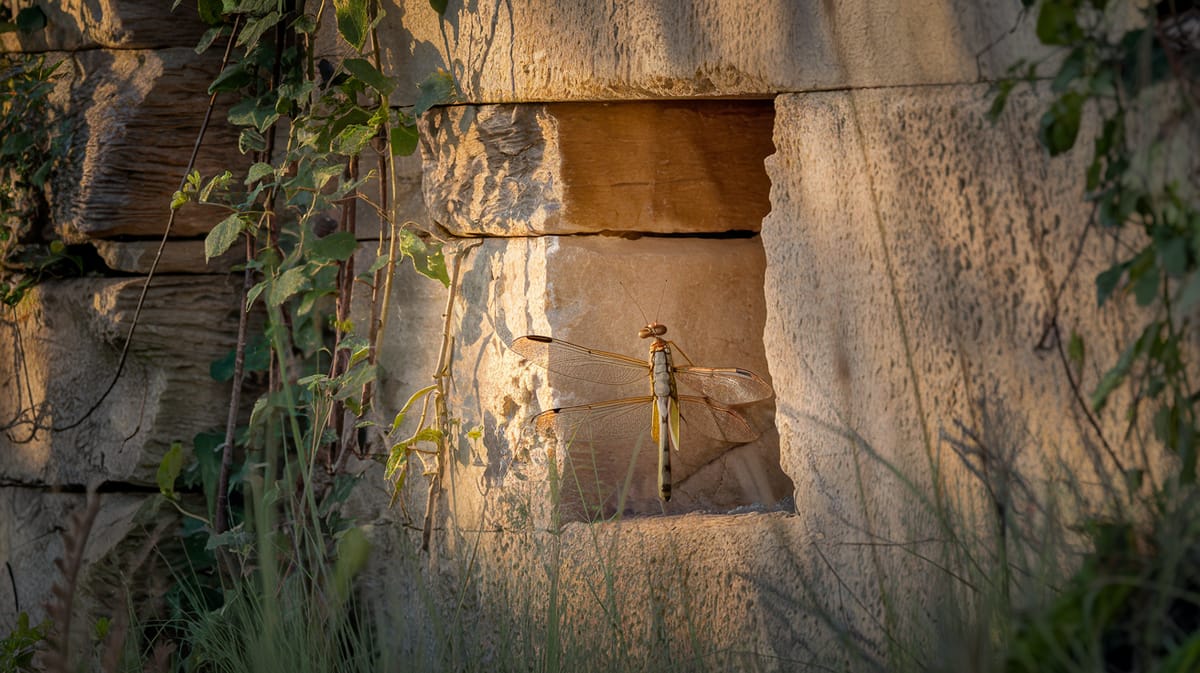Mantisfly
The Mantisfly combines the delicate appearance of a lacewing with the hunting prowess of a mantis, making it a fascinating predator. Its intricate lifecycle plays a crucial role in controlling pest populations.

Key Insights at a Glance
Did You Know?
Taxonomy & Classification
Mantisflies exhibit a fascinating blend of mantid-like appearance and lacewing-like wings, showcasing unique adaptations for predation within the Neuroptera order. Let's understand the evolutionary journey and classification of these remarkable predators.
Species Diversity
Mantisflies consist of over 400 species across the globe, with significant diversity in the Americas and Africa.
Evolutionary Adaptations
Mantisflies evolved distinctive raptorial forelegs over 140 million years ago, highlighting their specialized predatory adaptations within the insect world.
Lifecycle and Growth
A remarkable journey of transformation from Egg to Adult.
Egg
Mantisfly eggs are laid in clusters on surfaces, awaiting the right conditions to hatch into larvae.
Larva
Larvae are active predators, often parasitizing spider egg sacs, developing within and feeding on the host.
Pupa
During this stage, larvae undergo metamorphosis, transforming into adults within a protective cocoon.
Adult
Adults resemble a cross between a mantis and a lacewing, skilled at flying and hunting smaller insects.
Dietary Habits
An adept hunter with unique feeding strategies, this insect's diet includes various insects and occasional small vertebrates.
| DIET TYPE | DESCRIPTION |
|---|---|
| Primary Diet | Primarily consumes aphids, caterpillars, and small beetles, using its raptorial forelegs to capture prey efficiently. |
| Secondary Diet | Also feeds on spiders and other small arthropods, supplementing its primary diet with diverse prey. |
| Occasional | Occasionally targets small frogs or lizards, especially when typical prey is scarce or during specific seasonal changes. |

Behaviour and Adaptations
Discover the unique adaptations that make the Mantisfly an exceptional insect predator.
Raptorial Forelegs
Forelegs adapted for grasping prey with precision and force.
Mimicry Abilities
Mimics leaves for effective concealment from both predators and prey.
Larval Parasitism
Larvae parasitize spider egg sacs, ensuring a nutritious start.
Ecosystem Impact
Mantisflies play a vital role in sustaining ecological health and balance.
Parasitic Control
Their larvae parasitize spider egg sacs, controlling spider populations naturally.
Pollinator Support
Adult mantisflies contribute to pollination, aiding in plant reproduction.
Biodiversity Promoter
By maintaining spider populations, they help preserve biodiversity in ecosystems.
Conservation Challenges
Understanding and addressing the major threats to Mantisfly populations.
Habitat Destruction
Urban development reduces natural habitats critical for Mantisfly survival.
Pesticide Use
Chemical pesticides diminish Mantisfly populations by disrupting their life cycle.
Climate Variability
Shifts in climate patterns affect Mantisfly breeding and survival rates.
Frequently Asked Questions
How long do Mantisfly live?
Mantisflies generally live for about one to two months. Their lifespan can vary depending on environmental factors and availability of food. They undergo a complete metamorphosis, spending time as larvae before emerging as adults, which usually occurs in warmer months.
What do Mantisfly eat?
Adult Mantisflies primarily feed on small insects, while their larvae are known to be parasitic, often preying on spider egg sacs. As adults, they use their raptorial front legs to catch prey, similar to the hunting method of praying mantises.
Are Mantisfly poisonous?
Mantisflies are not poisonous to humans. They pose no danger and are harmless to people. Their main defense mechanism is their resemblance to the more intimidating praying mantis, which helps them avoid predators.
Are Mantisfly endangered?
Mantisflies are not currently considered endangered. They are relatively widespread in their native habitats, which include various regions around the world. Their populations are stable, though they may be affected by habitat changes and environmental factors.
What do Mantisfly symbolize?
Mantisflies, like mantises, are often associated with patience and precision due to their hunting style. They symbolize adaptability and careful observation, as they wait for the right moment to capture prey. Their unique appearance also contributes to their mystique in various cultures.
Do Mantisfly bite?
Mantisflies do not bite humans. They are not aggressive and do not have the mouthparts necessary to inflict a bite on humans. They focus on hunting small insects and are not interested in human interaction.
What color are Mantisfly?
Mantisflies typically exhibit a range of colors, often appearing green or brown, which helps them blend into their surroundings. This coloration provides camouflage, aiding them in both hunting prey and avoiding predators.
Does a Mantisfly have wings?
Yes, adult Mantisflies have two pairs of wings. These wings are clear with visible veins and resemble those of lacewings. Their wings aid in flight and are a distinguishing feature of the adult stage.
What does a Mantisfly look like?
Mantisflies have a distinctive appearance, combining features of both lacewings and praying mantises. They have elongated bodies, raptorial front legs similar to mantises, and transparent wings. Their heads are triangular with large eyes, giving them a mantis-like look.
Is a Mantisfly an insect?
Yes, a Mantisfly is an insect. It belongs to the order Neuroptera, which also includes lacewings and antlions. Despite its mantis-like appearance, it is not closely related to true mantises, which are in the order Mantodea.
Related Insects
Discover insects with similar characteristics to Mantisfly - including shared habitats, diets, and taxonomic classifications
Share this profile
Help others discover Mantisfly
